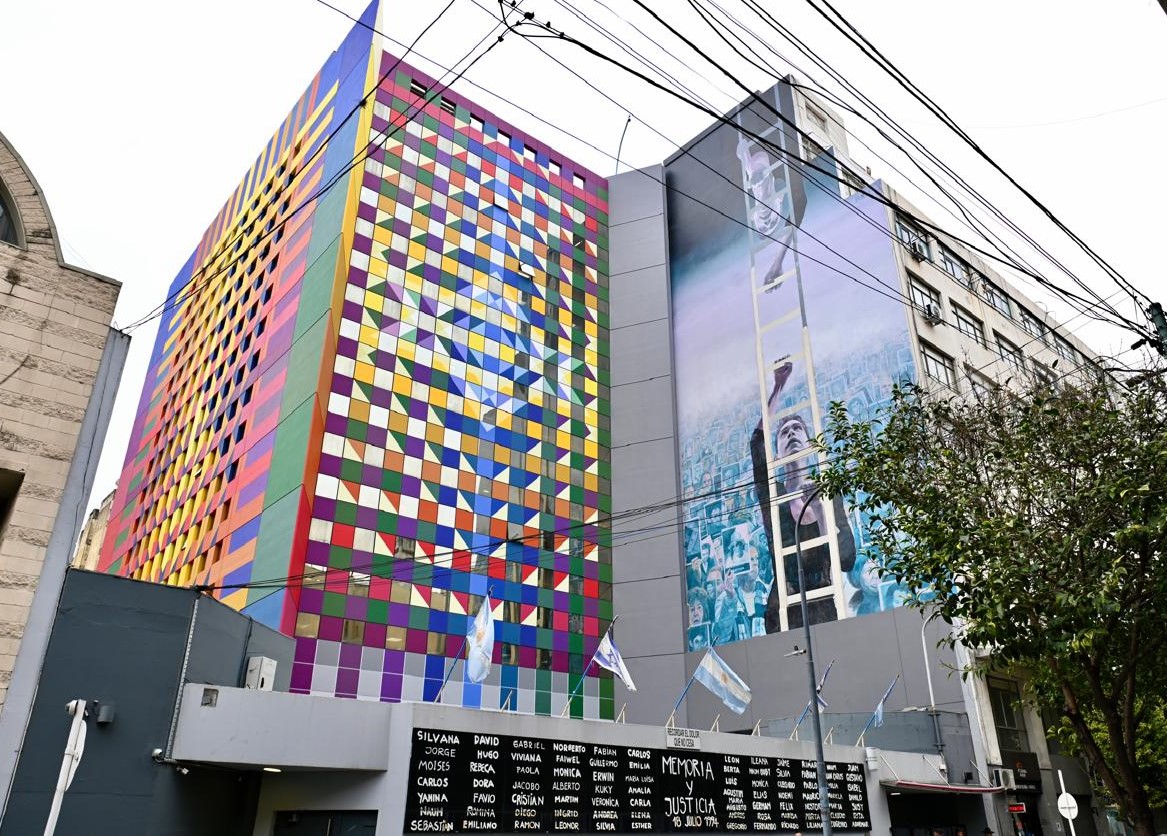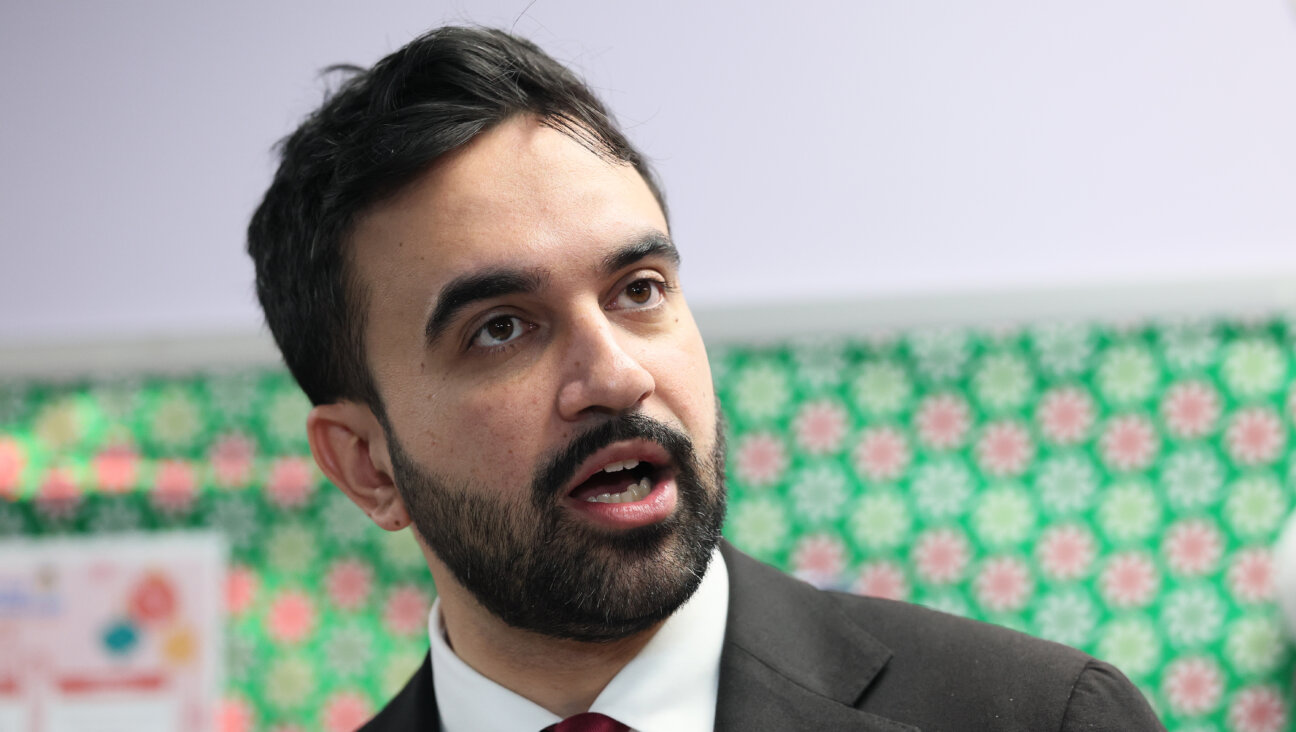30 years after deadly bombing, Buenos Aires’ AMIA Jewish center unveils colorful redesign
The bombing, attributed to Hezbollah and Iran, was the deadliest attack against Jews since the Holocaust until last year’s Hamas assault on Israel

The colorful new facade of Buenos Aires’ AMIA Jewish center abuts a mural painted to memorialize the 1994 bombing that killed 85 people there. (Juan Melamed)
BUENOS AIRES — The AMIA Jewish community center in this city has unveiled a colorful new facade, three decades after a deadly bombing turned it into a symbol of destruction.
The new facade is composed of colored triangles making up a patchwork pattern that wraps around multiple sides of AMIA’s eight-story building in the Once neighborhood. The design is meant to represent AMIA’s spirit and diverse activities, its director, Daniel Pomerantz, said Friday at a dedication ceremony.
Pomerantz was working at AMIA on July 18, 1994, when a car bomb ripped through the building, killing 85 people, wounding hundreds and ending plans to celebrate AMIA’s centennial. The bombing, attributed to Hezbollah and Iran, was the deadliest attack against Jews since the Holocaust until last year’s Hamas assault on Israel.
“These renewed walls are part of the celebration of the 130th anniversary of the institution,” Pomerantz said. “We are now living two important dates — the 30 years since the bombing and 130 of life. This artistic mural shows the diversity of our activities, our intensity and our colors.”
Daniel Peroni, an Argentine artist, designed “Colors of AMIA” to intersect with two prominent works commissioned to honor the bombing and its victims. Four years after the attack, Israeli artist Yaacov Agam unveiled a colorful sculpture in the courtyard of the rebuilt community center that symbolizes both the bombing and AMIA’s values. Then, in 2018, the artist Martin Ron painted a mural called “The Wall of Memory” as a way to renew attention to the bombing as controversy over who should be held culpable for it roiled Argentina’s politics and legal system.
In 2015, Alberto Nisman, a Jewish prosecutor, was found dead in his apartment shortly before he was to present evidence that the country’s then-president, Cristina Fernández de Kirchner, had covered up Iran’s role in the attack. It was only in April — shortly after the inauguration of a new pro-Israel president — that a top Argentine court issued a landmark ruling pegging the blame on Iran and Hezbollah.
Pomerantz said he possessed “a permanent double sensation” because of his relationship to AMIA. He said he is constantly thinking about “on the one hand the memories, the pain, the claim for justice, the memory of those who were killed on that morning, but on the other hand, the vibrant task that we do daily.”
Launched to support immigrants from Europe, AMIA provides social services, operates a Jewish cemetery and hosts social and educational activities. (An archive that had been housed in the building before it was bombed now operates elsewhere.) It is one of the largest organizations serving Argentine Jews, who number about 200,000, and also assists non-Jews.
This article originally appeared on JTA.org.














